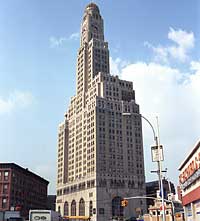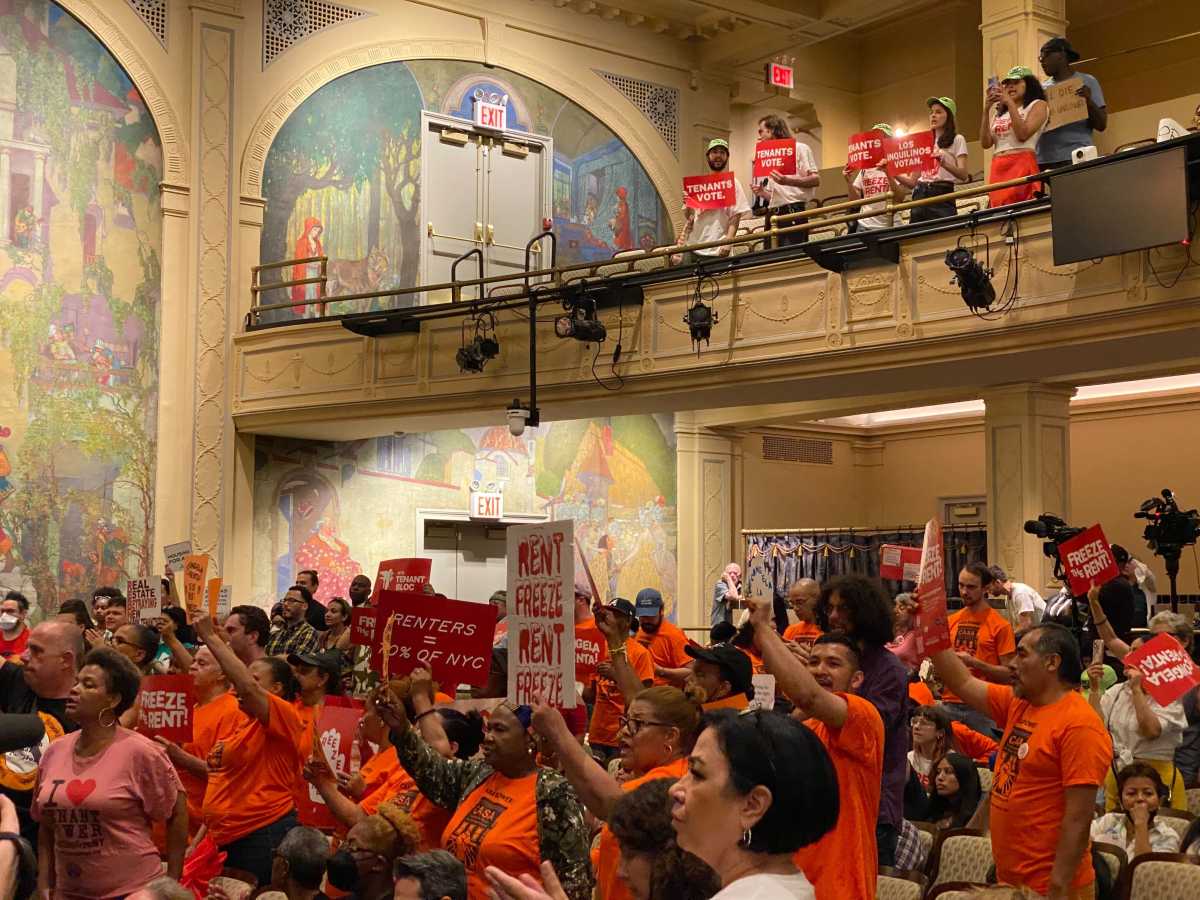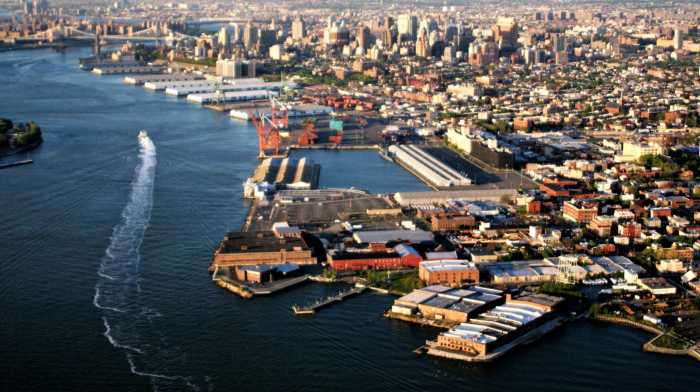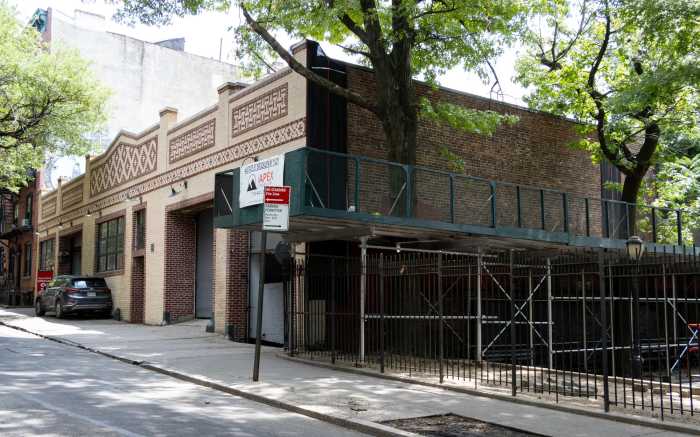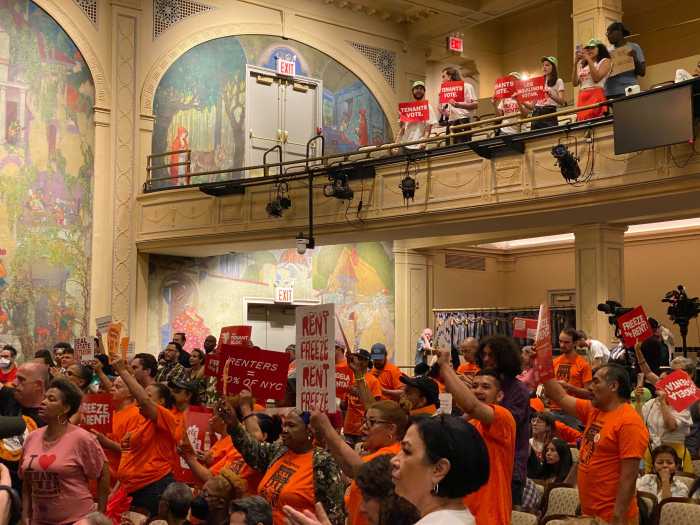The Williamsburgh Savings Bank building, the tallest in Brooklyn, noted
for its gold dome and density of dental offices, is on the auction block,
and experts believe the building will be converted to luxury condominium
apartments.
Bids were due this week on the 31-story city landmark at the corner of
Flatbush Avenue and Hanson Place — across the street from the Long
Island Railroad Terminal and the new Atlantic Terminal shopping mall and
one block away from the proposed Atantic Yards Nets arena site.
And there was no shortage of interest.
Current owner HSBC — an international bank with its headquarters
in London — took over the building in 1999 when it acquired Republic
National Bank.
It uses about one-third of the building said, Pamela Plehn, a spokeswoman
for HSBC.
“It really no longer fits in with our core strategy,” Plehn
said.
Asked if HSBC would continue to operate a branch office in the landmark
ground-floor marble space with 63-foot vaulted ceilings, Plehn said it
depended on what the new owners planned to do with the building.
While it is still unclear what will happen, many believe the building
could be converted into condos.
The real estate firm of Cushman & Wakefield is handling the sale.
Real estate experts expect the building to sell for between $60 million
to $90 million.
A number of developers have expressed interest in the property.
Rumors circulated this week that real estate mogul Bruce Ratner, who just
built the Atlantic Terminal mall across the street from the 512-foot Williamsburgh
Bank building and seeks to build a taller building as the gateway to his
$2.5 billion Atlantic Yards project, has his sights on the icon.
A spokesman for Ratner declined to comment on his interest in the property.
DUMBO developer David Walentas, famed for converting the industrial buildings
of the neighborhood between the Manhattan and Brooklyn bridges into luxury
lofts, was also considering a bid on the building, according to Jed Walentas,
the developer’s son and partner in their Two Trees Management firm.
In the 1920s, the Williamsburgh Savings Bank, with its headquarters on
Broadway and Driggs Avenue in Williamsburg, began construction on the
building at 1 Hanson Place.
The skyscraper — with a four-faced clock, the largest in the world
at the time it was built — was completed in 1929.
The Williamsburg Savings Bank continued to operate out of the building
until it was acquired by Republic National Bank in the 1980s.
With sweeping views of Brooklyn and Manhattan, the Neo-Romanesque-style
limestone building once housed more dentists than any other building in
the nation.
But many of the dentists, orthodontists, periodontists and oral surgeons
were forced out when Republic Bank started using more of the upper floors
for its offices, according to Dr. Irwin Kolin, an orthodontist on the
21st floor who has been straightening teeth in the building since 1959.
“We don’t want to leave the building,” said Kolin who now
shares the practice with his daughter.
“We get along beautifully,” said Kolin when asked about the
dental community in the building. “We sort of need each other’s
services. There are general dentists who need surgeons, periodontists,
root canal specialists — all those people are in this building.
“It was never really foreseen that they would take this building
and make it a residential establishment,” he said.
From the dental chair, Kolin’s patients have sweeping views of Brooklyn
with church steeples spiking into the sky.
There are no direct elevators to the top floor and visitors must get off
and change for another elevator at the 16th floor.
Gazing out over the borough from one of the building’s upper floors,
David DeGrasse, a retired city worker who was visiting a non-profit office,
sighed when he heard the building might be turned into condos.
“Once it becomes apartments nobody will be able to come in here anymore,”
said DeGrasse who lives in Crown Heights and said his parents received
a loan from Williamsburgh Savings Bank to purchase their first home.
An engraved inscription on the corner of Hanson Place dedicates the building
to the “depositors past and present” who have “built homes
and educated children, opened the door of opportunity to youth and made
age comfortable, independent and dignified.”
The inscription also credits customers who swept aside “the petty
distinctions of class and birth and so maintained the spirit of American
democracy.”


